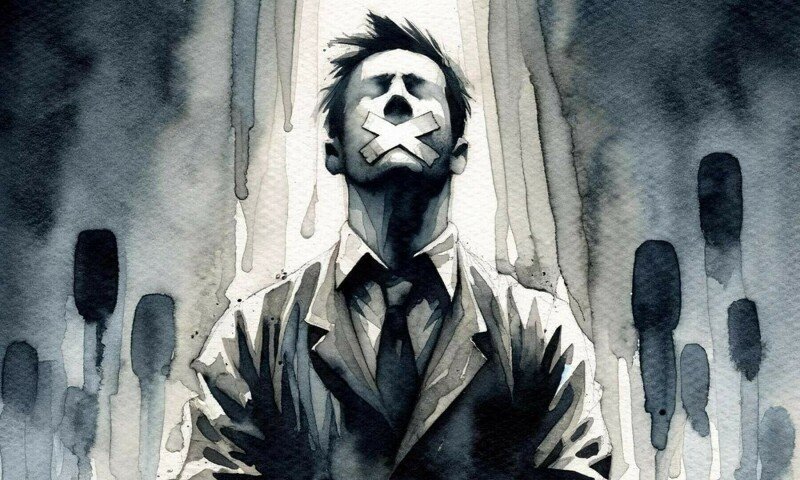Pakistan’s digital rights remain hostage to the same political charades that allowed Peca to flourish in the first place.
Ten years ago, in 2015, the first draft of the Prevention of Electronic Crimes Act (Peca) 2016 emerged. But not because the government (then also the PML-N) felt the need to be transparent, share and consult. It was a leaked draft that was analyzed and shared.
The draft caused immediate alarm among digital rights activists, prompting a press conference in Islamabad to warn of the bill’s worrying implications. However, the atmosphere in the room was skeptical. The journalists asked the organizers: “How do you know this is the bill? Shouldn’t social media be regulated?
Incidentally, the next day, the IT standing committee of the National Assembly approved a version of the bill similar to the one circulated and discussed at the press conference.
For the next year and a half, the bill was noisily debated both inside and outside the assemblies, not because the government encouraged such talk, but because an alliance of civil society and industry, supported by allies in the opposition and the media, ensured that it happened. . Despite the resistance, Peca finally saw the light. The Pakistan People’s Party (PPP) came out as a strong opponent of the bill, ensuring that its stance was heard loud and clear. However, the bottom line is that this issue goes beyond mere stance.
Empty resistor
While several lawmakers within the party deserve credit for keeping Peca under scrutiny, resisting her in the assembly and proposing amendments, momentum faltered when it really mattered: in the Senate, where the opposition enjoyed a majority. When things came to an end, resolve wavered.
The bill could have stalled further, but when it reached the Senate standing committee, there was a rush to conclude discussions, with claims that “enough time” had been devoted to debate and that the bill “needed” to pass. . Despite significant input and alternative legal formulations provided over the previous year and a half, it was stated that civil society had not contributed anything significant or in a timely manner.
PPP lawmakers congratulated themselves on a job well done: proposing more than 50 PECA amendments in the Senate, all of which ultimately amounted to nothing more than cosmetic tweaks to semi-colons. None of the substantial changes proposed by civil society were incorporated.
Such contempt was expected from the PML-N government. However, as the bill neared the finish line, the PPP and its allies played their optical game, projecting an image of resistance while allowing the introduction of a law that they could have done much more to soften, if not stop completely.
Now, the same PPP and its members are making fiery speeches in Parliament about the state of the Internet and floating ideas for a digital rights bill. But what good is any bill or affirmative legislation when the Constitution itself has been reduced to a redundant piece of paper? When the protections enshrined in the Constitution carry no weight during investigations, prosecutions and trials, how can a special statute negate the draconian impact of the way a criminal law is developed on the ground: in an FIA office or in the court of first instance? Especially when the procedural guarantees that exist in the law itself are ignored with impunity.
Illusion of digital rights
Legislators often think that passing a law marks the end of their responsibility. They love to present legislation as a feather in their cap. But the proof of the pudding is in their implementation, which they don’t mind monitoring. This is despite the legislative scheme’s extensive provisions, including permanent and special committees, to expand oversight and carry out legal reforms based on substantive analyses, not knee-jerk reactions and imagined problems.
What amendments have been introduced since the Peca was enacted in 2016 to reverse its draconian nature? Apart from the few times that standing committees have addressed specific issues raised about their implementation, what oversight, scrutiny or accountability has been carried out?
Even now, there is a lot of talk about slow Internet speeds and standing committees have been addressing related topics such as web management system (WMS) or firewalls. But what has this scrutiny substantially revealed? Has the government or PTA come clean about the technology that has been implemented? Its capacity? Acquisition and operation details? Has any legislator even asked about the details and followed up?
Added to the failure of Parliament is that of the courts, where there are numerous petitions pending, challenging the actions of the government and the PTA for transgressing their limits and seeking the protection of fundamental rights, but without success.
In this environment, what value then is a “digital rights” bill? The same executive that tramples all things digital has been empowered by this same legislature, including the PPP, through the 26th amendment, which has further weakened the courts. How then, with seriousness, can the claim for a digital rights bill be made?
Another imminent doom
Now, the Prevention of Electronic Crimes Amendment Bill, 2025 is staring us in the face.
It creates more crimes, limits more categories of speech, allows for regulatory capture through new authority, and adds more bureaucracy with onerous procedures through the creation of courts. The bill strengthens the hand of the same authorities that continue to hold the Internet, services, platforms and citizens hostage.
Only time will tell whether these speeches will result in tangible, substantive resistance, or whether there will be opposition and they will be significantly halted, rather than being approved as has become the norm in parliament.
As they say, fool me once, shame on you. Fool me twice, shame on me.
This time there is no ‘but’. These amendments are not necessary and are certainly not introduced to protect citizens. That fig leaf no longer exists. They only serve to maintain the status quo, reinforcing dominance over speech and information while further subjugating citizens.
Header image generated by DALL-E 3.








